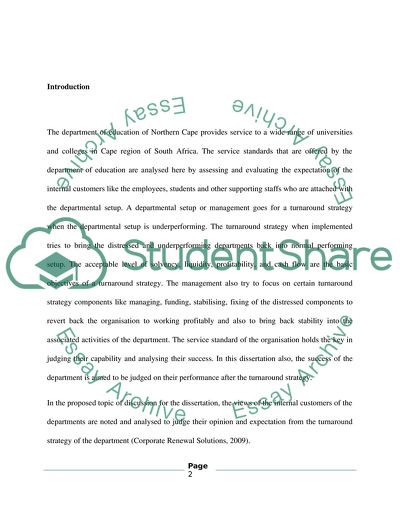Cite this document
(“Northern Cape Department of Educations Service Standards Research Proposal”, n.d.)
Northern Cape Department of Educations Service Standards Research Proposal. Retrieved from https://studentshare.org/education/1567546-an-analysis-of-the-northern-cape-department-of-educations-service-standards-through-assessingevaluating-internal-customer-expectations-and-perceptions-in-view-of-its-turnaround-strategy
Northern Cape Department of Educations Service Standards Research Proposal. Retrieved from https://studentshare.org/education/1567546-an-analysis-of-the-northern-cape-department-of-educations-service-standards-through-assessingevaluating-internal-customer-expectations-and-perceptions-in-view-of-its-turnaround-strategy
(Northern Cape Department of Educations Service Standards Research Proposal)
Northern Cape Department of Educations Service Standards Research Proposal. https://studentshare.org/education/1567546-an-analysis-of-the-northern-cape-department-of-educations-service-standards-through-assessingevaluating-internal-customer-expectations-and-perceptions-in-view-of-its-turnaround-strategy.
Northern Cape Department of Educations Service Standards Research Proposal. https://studentshare.org/education/1567546-an-analysis-of-the-northern-cape-department-of-educations-service-standards-through-assessingevaluating-internal-customer-expectations-and-perceptions-in-view-of-its-turnaround-strategy.
“Northern Cape Department of Educations Service Standards Research Proposal”, n.d. https://studentshare.org/education/1567546-an-analysis-of-the-northern-cape-department-of-educations-service-standards-through-assessingevaluating-internal-customer-expectations-and-perceptions-in-view-of-its-turnaround-strategy.


